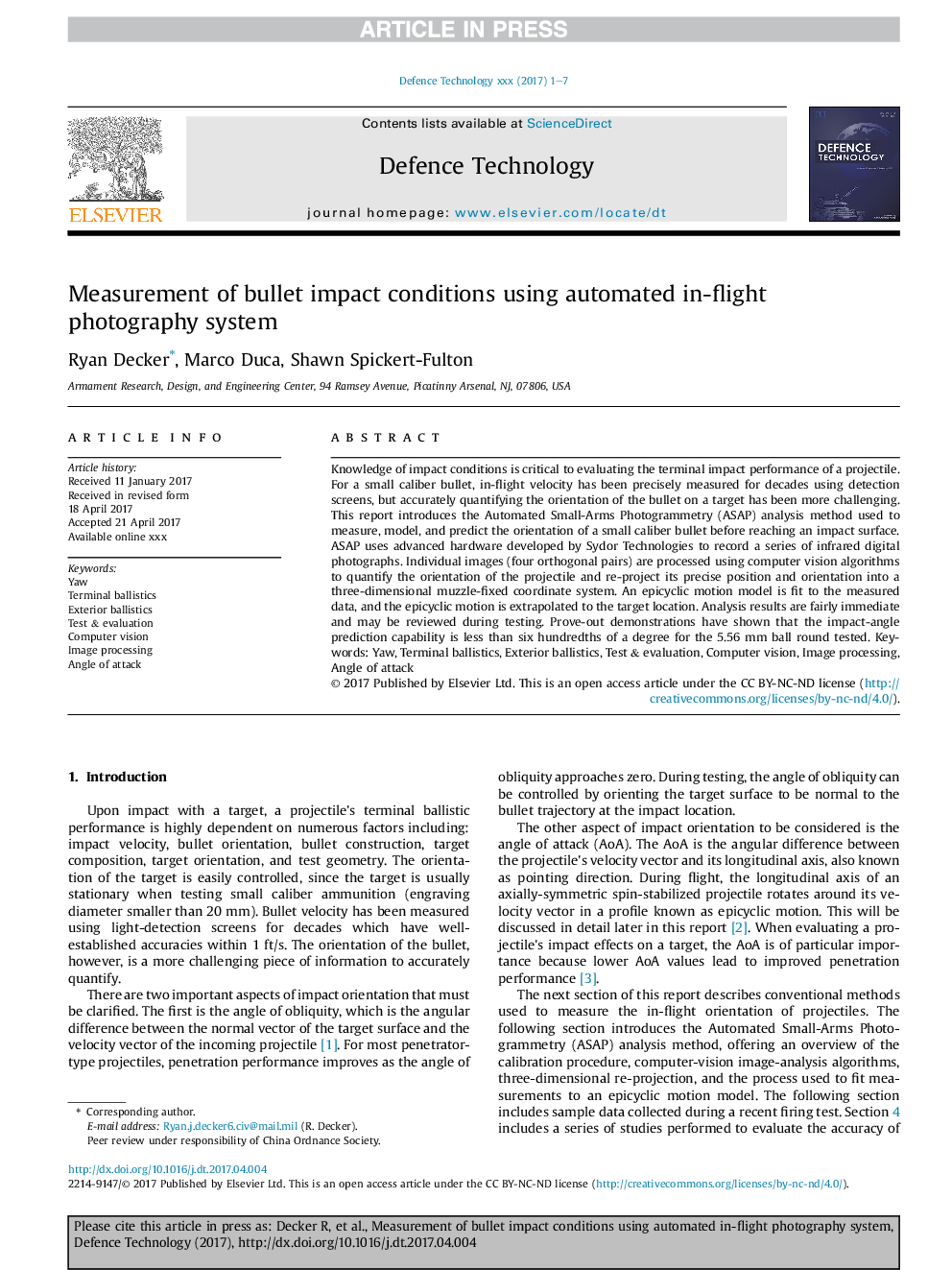| Article ID | Journal | Published Year | Pages | File Type |
|---|---|---|---|---|
| 7157697 | Defence Technology | 2017 | 7 Pages |
Abstract
Knowledge of impact conditions is critical to evaluating the terminal impact performance of a projectile. For a small caliber bullet, in-flight velocity has been precisely measured for decades using detection screens, but accurately quantifying the orientation of the bullet on a target has been more challenging. This report introduces the Automated Small-Arms Photogrammetry (ASAP) analysis method used to measure, model, and predict the orientation of a small caliber bullet before reaching an impact surface. ASAP uses advanced hardware developed by Sydor Technologies to record a series of infrared digital photographs. Individual images (four orthogonal pairs) are processed using computer vision algorithms to quantify the orientation of the projectile and re-project its precise position and orientation into a three-dimensional muzzle-fixed coordinate system. An epicyclic motion model is fit to the measured data, and the epicyclic motion is extrapolated to the target location. Analysis results are fairly immediate and may be reviewed during testing. Prove-out demonstrations have shown that the impact-angle prediction capability is less than six hundredths of a degree for the 5.56Â mm ball round tested. Keywords: Yaw, Terminal ballistics, Exterior ballistics, Test & evaluation, Computer vision, Image processing, Angle of attack
Related Topics
Physical Sciences and Engineering
Engineering
Control and Systems Engineering
Authors
Ryan Decker, Marco Duca, Shawn Spickert-Fulton,
